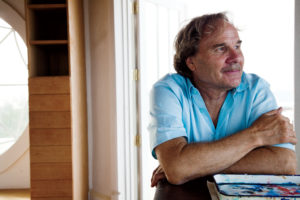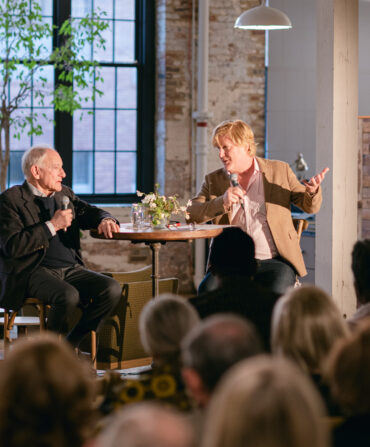Arts
Southern Masters: Stephen Scott Young
Nearly thirty years ago, the artist discovered his muse in the Bahamas and since then he has remained true to the people, the place––and his incredible talent
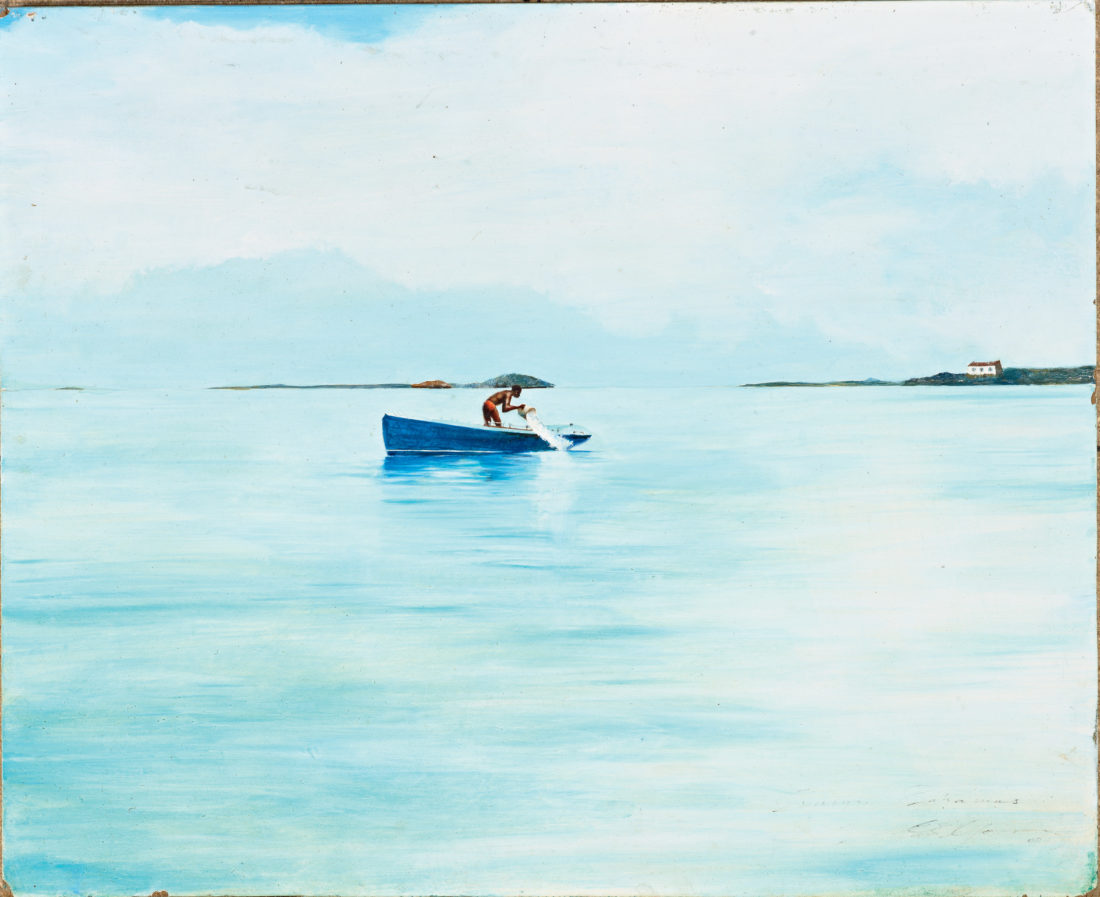
Photo: Cedric Angeles
Standing inside his lighthouse, which isn’t really a lighthouse, Stephen Scott Young gazes at the dark waters of the Atlantic barreling into the gnarled and rocky cliffs a little ways away. We’re in what would be the lantern gallery if this were a real lighthouse, which it isn’t, and he says, not for the first or last time, “I should finish it, shouldn’t I?” It’s a truly awesome structure: The path to it is white concrete coiled like the shell of a gastropod and decorated with real Moroccan tile, much of it laid by Young himself; inside is a spiraling staircase carved from a single piece of teak twelve feet high. Here we are at the very top, sixty-five feet off the ground, in a room with a fairy-tale view of the ocean. A wizard should live here, or at the very least an artist, someone like Stephen Scott Young. But he doesn’t live or even work here. Other than the staircase and a forty-eight-inch-high wooden table, weathered and scarred but solid and strong, not unlike Young himself, the place is just about empty. “I should finish it, shouldn’t I?” I say I think he probably should.
On the other hand, nothing in Eleuthera appears to get finished. Driving down Queen’s Highway, the only major road on this long thin outer island in the Bahamas, you’ll pass dozens of cinder-block structures half hidden in grass or standing completely naked on soil that looks like the remains of a pulverized parking lot. Other places have been blown over by one of the many hurricanes that visit the Bahamas, and they’ve just been left there, piles of rubble and wood, not even waiting to be removed because somehow it’s clear, even to me who has never been here before, that they’re never going to be. Eleuthera is a hard place to live: There’s no real industry other than pineapples and Harbour Island tourists, and it’s hot and so laid-back that you’re almost lying down. But this isn’t why Young’s lighthouse is like this. It was almost finished, once. By all accounts it was remarkable, with copper gutters, copper showerheads, a one-hundred-year-old bronze window, eighteen New England–style Acorn exterior lights, all of it handpicked by Young, who designed it himself, first on a napkin in a restaurant in Charleston, South Carolina, and then from a balsa wood model it took him three months to build. He played with the idea of installing a genuine crystal lamp in the top of it, but the Bahamian government forbade it. It was just about done when he had to go back to Jupiter, Florida, where he lives for most of the year, and in his absence the place was gutted by thieves. Every ounce of copper was ripped from the walls, the bronze window, the exterior lights—everything but the copper roof. The structure stood, but the particulars that made it real and true to his dream of it were gone.
He didn’t go back for two years. It hurt too much to see it. Now it feels like the ruins of a lost city, and it’s sad in the very same way. I wasn’t looking for a motif when I visited Young in Eleuthera, but I found one here. Nothing is black and white, of course, but at the same time everything is, especially here in Eleuthera, and especially with Stephen Scott Young.
Stephen Scott Young (outside of the art world, where three names are better than two, he goes by Scott Young) has been an artist all his life, and for most of it he’s been a professional artist, by which I mean he’s almost always made a pretty good living; now he makes a pretty great one. He’s a realist, which means his paintings are of subjects recognizable to anybody: black Bahamians, for the most part. This is in direct opposition to nonobjective or abstract art, in which innovation is more highly prized and depth and meaning are sometimes implied through our inability to understand it. His anomalous career has been shaped and directed by what could be construed in hindsight as fate, but which in fact is just what happens when coincidence, happenstance, accident, and luck coincide with boundless talent and unbridled passion.
This is how it began. When he was nine years old, his mother gave him a series of books called, he thinks, The Great Masters of Art. There may have been no “grand plan” behind the purchase; maybe it was just a mother’s intuition. But Young was focused on drawing even then. His father was in the army and they were never in one place for long: Young attended eleven schools in as many years. So he spent a lot of time on his own, drawing, and his mother simply took note of this and got him these books. The great master who moved him most was Caravaggio. Caravaggio. When Stephen Scott Young was nine years old, he fell in love with a sixteenth-century Italian painter. He became mesmerized by his trademark chiaroscuro, that dramatic shift from light to dark, where darkness is the dominant feature of the image. Not that Scott knew what the style was called then or could even pronounce it if he did, but getting this book on this day was, in effect, like being born and imprinting on the first face you see.
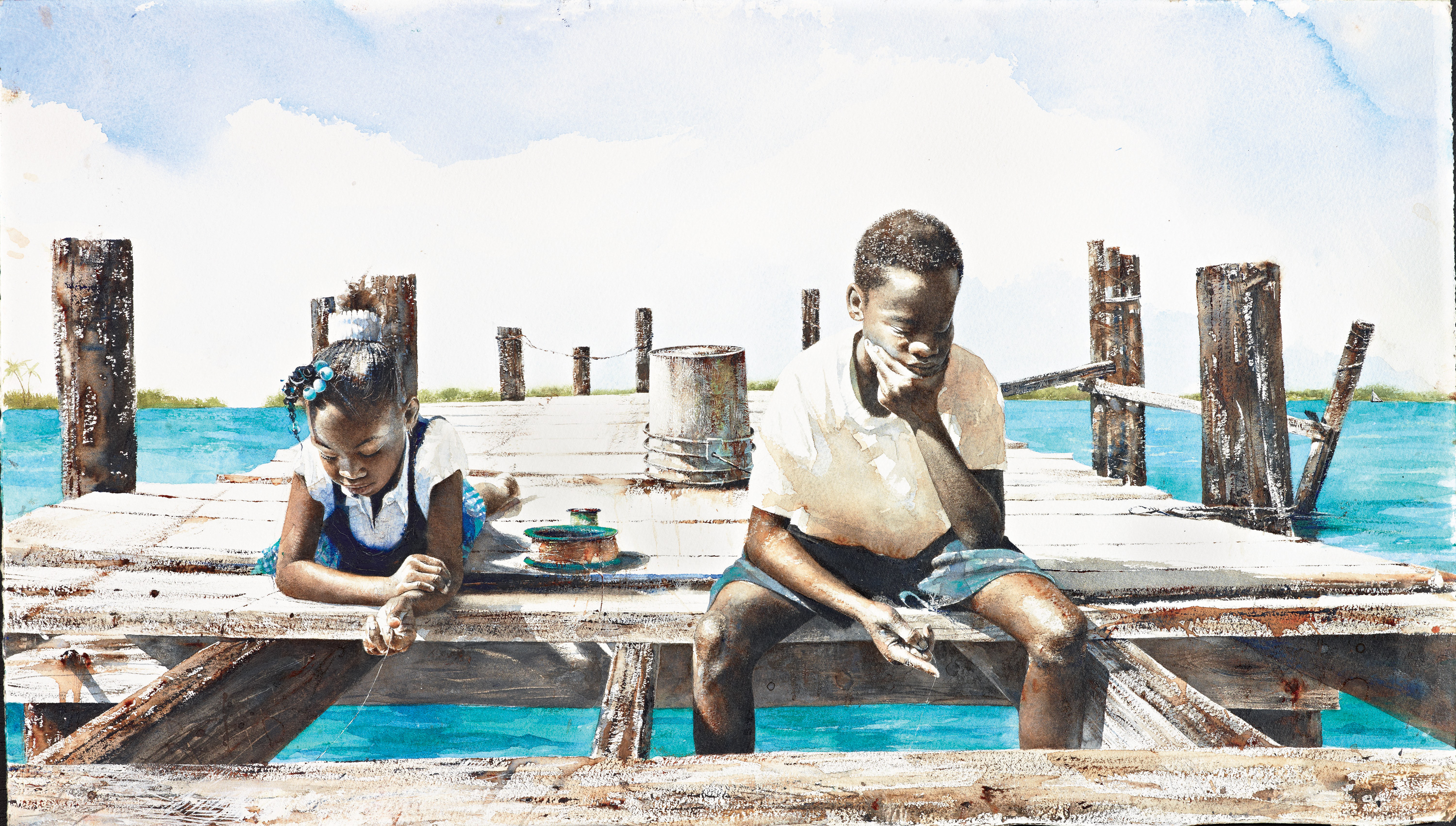
Photo: Stephen Scott Young
Hatchet Bat Handline
2011.
Young is fifty-six now, and compact, with leathery skin and starburst wrinkles and deep-set eyes, the kind of man who looks as though he has spent his life exclusively in places where the sun usually shines, and this just happens to be the case: Hawaii, where he was born, then a long time in the South, and finally Eleuthera, in the Bahamas. He’s here about a week every month, and the rest of the time he’s in Jupiter. For the last twenty years or so he’s been going back and forth, perpetually home and not home, with his family and without, the only constant in his life his art, because that’s just about all he does. He draws, he paints, he etches—constantly.
The first time I meet him he’s wearing jeans and a white short-sleeved button-down shirt, but only because we’re having dinner at the newly renovated Cove, Eleuthera’s swankiest resort; every other time I see him he’s wearing jeans (the same jeans) and a T-shirt. He looks more like a landscape designer than he does like one of the great realist masters at work today, more like a gardener (he loves to garden) than one of only a handful of living artists ever to be offered for auction at Christie’s. According to Dr. William Gerdts, professor emeritus of art history at City University of New York and the author of more than twenty-five books on American art (including one on Young himself), Young is one of the preeminent realists at work today. Young, he says, is an heir to Andrew Wyeth and Winslow Homer, two of the greatest painters this country has produced. Still, Young just looks like…some guy. Part of this is due to the island culture itself—apart from Harbour Island and the Cove it’s hard to find a place to get dressed up for on this end of Eleuthera—but I think he’d look the same no matter where he is, because he doesn’t really think about that sort of thing. He’s quick to smile and laugh, and friendly and warm—remarkably outgoing for a self-described hermit. It’s true, he doesn’t have many friends; his closest is probably Ben Whiteside, who also happens to be his art dealer, and he lives in Bluffton, South Carolina, many miles away. Young’s work habits account for this to some degree: It’s hard to make friends when you’re in a room by yourself for much of your waking life. But it’s more than that. “I was an army brat,” he says. “We were at a new base every year; making friends was a skill I never learned. Or at least haven’t, yet.”
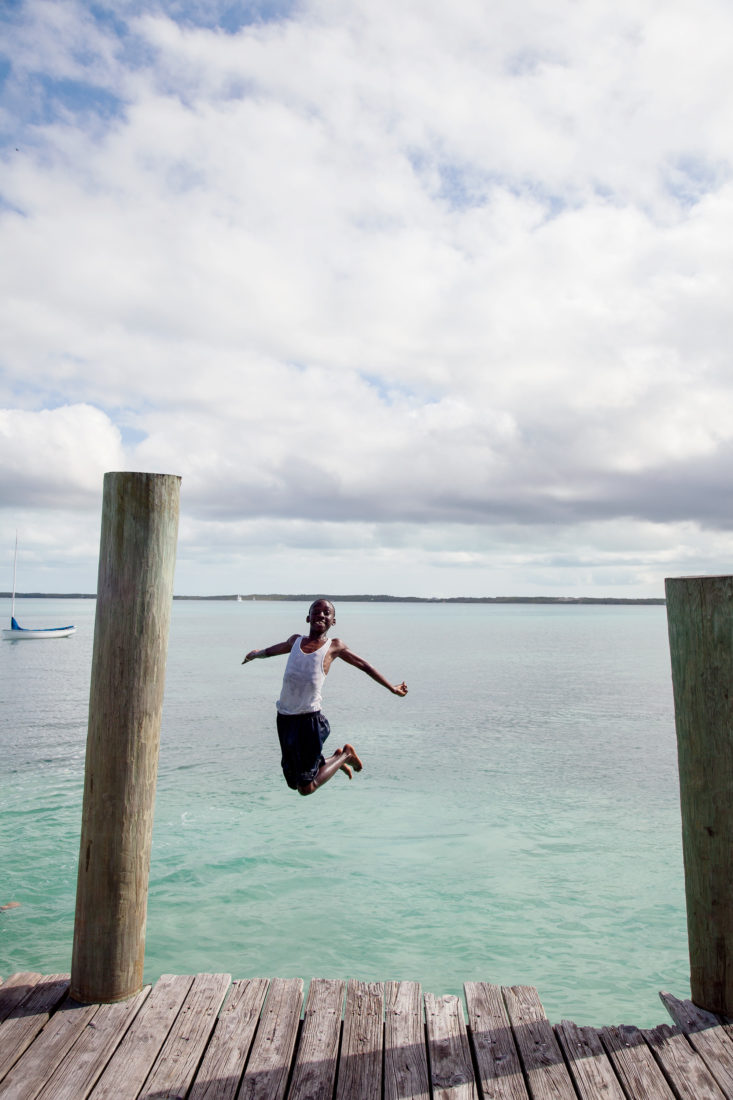
Photo: Cedric Angeles
A young boy takes a leap.
Young’s father served in Vietnam for three tours; on the last he was shot down, losing his left leg. His father’s drive to push through this, and his strength in the face of the brain-poisoning effects of Agent Orange, is what Young attributes much of his own drive to. He’s very close to his daughters, Emma and Cade, grown now, and his wife and best friend of thirty years, Annette Farrington-Young. His family. But when I asked him if there was anybody else I could talk to, he shrugged. “I don’t think so,” he said. “I don’t think I know anybody else very well.”
He met Annette Farrington at Ringling College of Art and Design in Sarasota, Florida, in 1979. She was there for graphic design, and Scott was there to learn printmaking. They spent a lot of time together in the Laundromat talking, and as anyone who has spent a lot of time in a Laundromat can tell you, things began to sort themselves out. They fell in love. Even then, Annette says, he worked constantly. “He was known as someone who went to school during the day, did his assignments, and painted his own work all night long,” she says, a marvel even to other art students, who were supposed to be doing the same thing.
They married in 1981.
Falling in true love is always a stroke of luck, the most fortunate happenstance, but there was something else about Annette, an unrealized bonus, which made this stroke an even luckier one for him.
Annette is Bahamian. She’s actually the seventh generation of some of the original settlers. And had she not been Bahamian, Young may never have even gone to the Bahamas, never visited Harbour Island, where he began painting in 1984. He never would have seen where the Glass Window, the natural rock formation where Winslow Homer painted one of his most famous watercolors, had once been. And he wouldn’t have fully understood what that Caravaggio moment meant to him.
I believe that it’s just this rare alchemy, this magic brew, that allows a man to become something more than just another artist, that allows him to mine his peculiar genius. If that weren’t the case, we’d have a lot more Caravaggios, a lot more Winslow Homers, and a lot more Stephen Scott Youngs than we do; as it is we have just one of each, the ideal number. First his mother, then his father, and finally Annette: Going to the Bahamas gave Young the freedom to become himself.
Which is what Eleuthera means, by the way. Freedom.
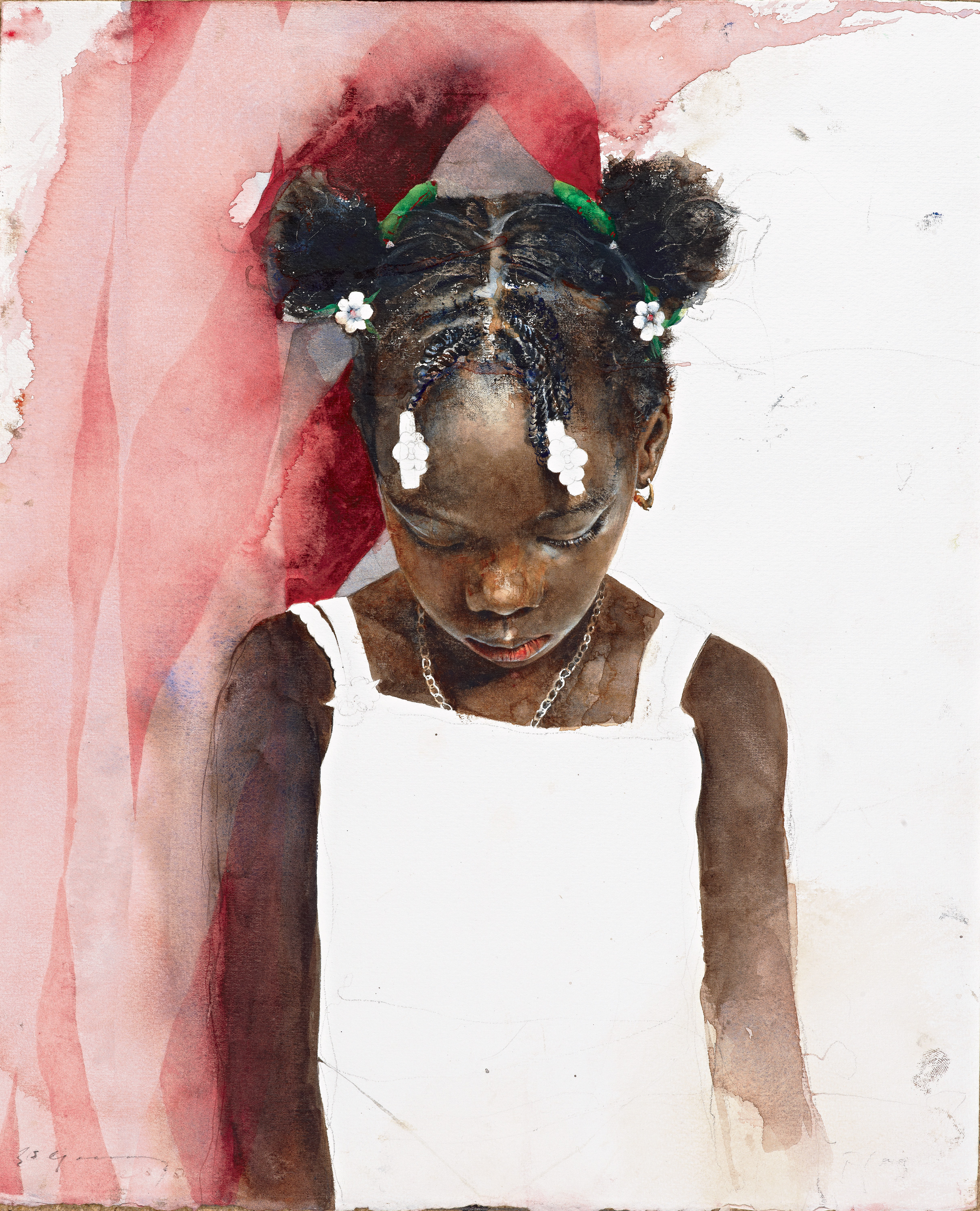
Photo: Stephen Scott Young
Freedom
(study), 2010
From the parapet around this abandoned structure (which, as has already been well established, is not a lighthouse), we can see Harbour Island. Harbour Island is just a couple of miles off the northern tip of Eleuthera, but you have to take a water taxi to get there, and it feels like a whole different world. It’s just as they say in the guidebooks: The beaches there are pink, paired with the three shades of blue the Atlantic offers. I’ve never seen anything like this except in science fiction movies about a planet that’s supposed to be just like Earth, but prettier. “That one stretch of beach,” he tells me, pointing pinkward, “has eight billionaires who live on it. Eight. Right there.”
I was never able to confirm whether this is in fact a fact, but, as usual, the facts are far less important and interesting than the truth, and the truth is that Harbour Island has changed a lot since Young first started painting there. It’s different from Eleuthera. It’s become a destination for the yacht-burdened, a haven for Hollywood aristocracy. Young isn’t happy about that. They ruined it for him, really, those sparkly people in their pimped-out golf carts, tooling around despoiling the once-upon-a-time sort of place Harbour Island used to be. He knows some of them probably collect his work, as they’re some of the only people who can afford it. Still, no longer can he walk the streets and settle down to paint as he once did, wherever he wanted, whenever he wanted, and most important, whomever he wanted: the black women, men, and children who made their lives there. For years and years it was as if he were the only living artist on the island; children would surround his easel, eager, hoping he would choose one of them to play a part in the scene he was sketching, not least because he paid them well, and their chaperones, too. Young always insisted on a chaperone. On Harbour Island is where he met Shelley, a girl he painted for close to fifteen years. But that was then.
Contemporary realism is hard to pigeonhole, Dr. Gerdts says: Were you to have a show dedicated to it, how much inventiveness would you allow? On the one hand, Young paints realistic scenes from a very real place, but he doesn’t paint from photographs: Dozens of studies precede every painting. He changes what he needs to—inserts another marble shooter where there wasn’t one before, a dog, a picket fence—all to create the truth he’s after (or the truth that’s after him). They’re called watercolors but they’re not really: Young employs a technique known as drybrush. Homer used it and so did John Singer Sargent, swift movements of a brush loaded with damp pigment, “scumbled” or scraped across the watercolor paper. The effect, when rendered, suggests the depth of his subjects’ character, and their warmth, as well as the burden of their history, and, in his best work, their numinous souls. His paintings are not simply portraits of a place but stories of our time, something brand new disguised in the familiar.

Photo: Cedric Angeles
Watchtower
Young’s lighthouse that isn’t, on Eleuthera.
I get chills: Young says this a lot. It’s how he expresses feeling deeply about something. He gets chills when he thinks about what happened to his lighthouse, chills when he worries that he’ll lose whatever it is that propels him into a painting, the inchoate desire that in time turns into an intimate, almost carnal passion (he begins his paintings standing up, and finishes them on his knees, but he never sits). He doesn’t know what he’ll do if he loses that. “Twenty more years,” he says. “Just twenty more years…” trailing off here because he knows that twenty more years will not be enough. There is no amount of time that will ever be enough for him. If Young doesn’t leave the world with a paintbrush in his hand, it’ll be because he goes in his sleep.
How important is painting to Scott Young? He went swimming once near a coral reef crowded with those spiny sea urchins, wearing nothing but boots and heavy gloves. Boots and gloves—and nothing else. He’s willing to risk the other precious parts of his body, but not the feet he stands on to paint, and not the hands that make his vision real.
Driven: This is a word most often used to describe Young, and it’s a word he uses himself. Annette says he has no interest in and doesn’t think much of the world beyond his canvas, because that’s not where he lives. That Oprah gave Obama one of Young’s paintings when he was elected in 2008, how he’s seen as an heir to this painter and that painter, that his work has made him a very rich man—none of this seems to have seeped into his consciousness. This is not his life. He’s driven to paint and to etch, to finish a piece, to learn something from it, to do the work justice, to tell the story he wants to tell in the way he can tell it best. He doesn’t believe his own press because he’s not even aware it exists: He has a fan page on Facebook he didn’t know was there until I showed it to him. Pictures of his own father were posted there—a young, handsome man—and when he looked at them, I thought he might cry. “I’ve never seen those before,” he said.
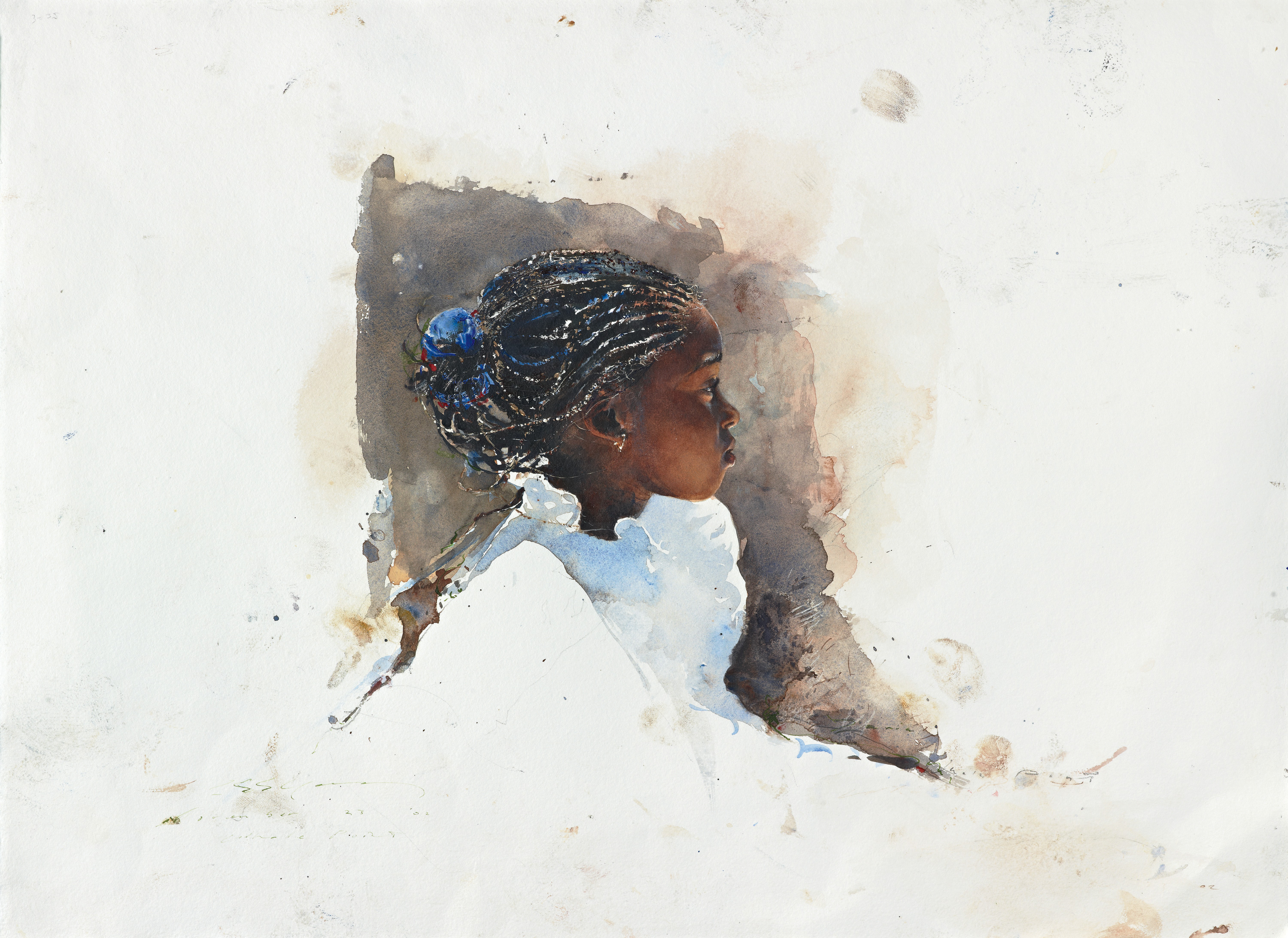
Photo: Stephen Scott Young
On Whale Point (Zaria)
2003
Lately he’s been etching; he’s been etching a lot. Though most people think of him as a watercolorist—a term he’s not really fond of, by the way—etching is his greatest love. It’s the process, he says, how physical, and even dangerous, it is. Acid is used to bite the crosshatched drawing into the copper plates, and he is always a little nervous, because he doesn’t know exactly what he’s drawn until the acid does its work and he can print those tiny lines. His daughter Emma sells his etchings through a website she built, so it’s kind of a family affair, and Young really likes that part of it. It gives him chills, he says, but the good kind. Everything good that has come to him has come to him through family: his mother, his father, Annette, his daughters. They’re the ones who helped him make his luck, who gave him a home to make it in. And that’s what his work is ultimately about: place. It’s about settling down, finally, and discovering his own “postage stamp of native soil,” even if he’s not quite native to it. Because it was in Eleuthera that he made his first real home, where he knows everybody and everybody knows him, creating on his own terms the sense of place and purpose he never had growing up. Here in Eleuthera he made two families, one as real in this world as the other is in his work.
Back in the mid-eighties Young visited Harbour Island so often that he learned where the light would be when he got there. He knew where the sun was on every home on every street, and so he knew where to go to paint the idea he had in his head. Light is what he wants; otherwise he’ll never get to see what’s in the dark. This is what we’re talking about in the lighthouse—which is exactly what it is, a cistern of light, a reservoir: All of it just happens to be coming in, not going out. “I should finish it, shouldn’t I?” Yes, sure, you do that, I tell him. But I don’t think he will finish it, because he loves the process so much, loves it probably more than the product. He doesn’t want to be done, not now, not ever.


